Corals: Animals that Give Off Oxygen??
If an animal is to carbon dioxide and plant is to oxygen, then how an animal like corals gives off oxygen?
First, let us know what corals really are!
When we hear ‘Corals’ we imagine colors underwater, fishes, crustaceans hiding beneath, diversity and an ecosystem with high productivity!
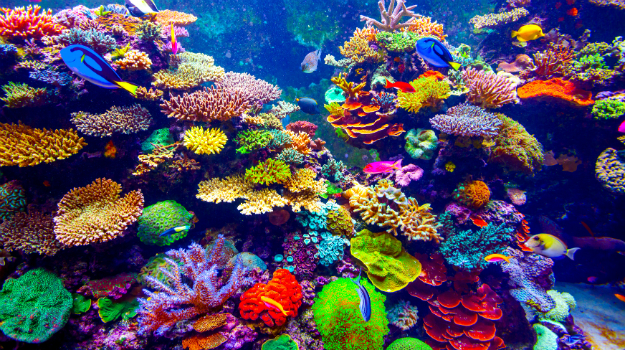
(Image Source Pinterest)
Corals are invertebrate animals and is one of the various cnidarians (armed with stinging cells called nematoysts) in the ocean like jellyfishes, box jellies, sea anemones, sea pens, siphonophores and many other medusae.

Jellyfish (Image Source: Wikipedia)
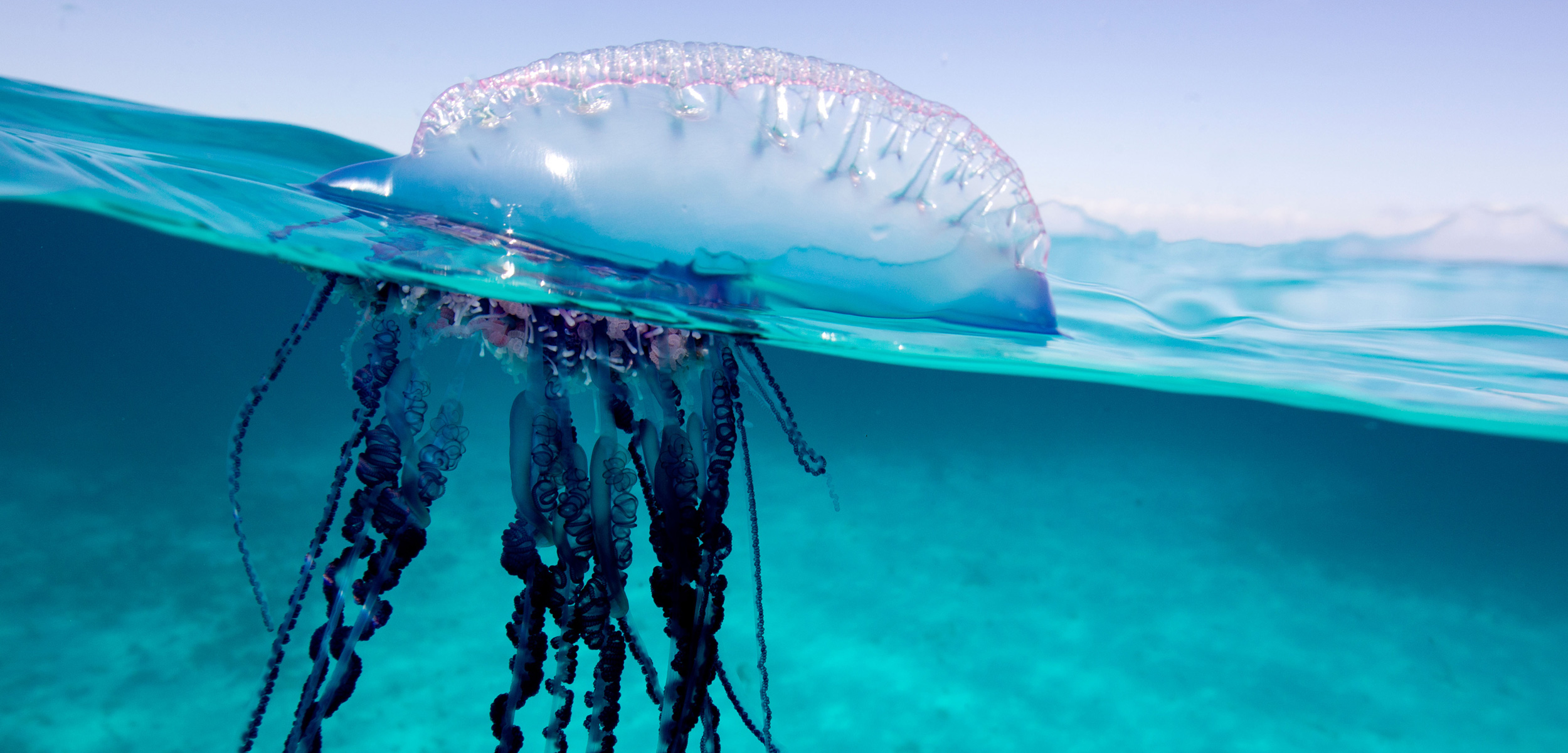
Portuguese Man O'War (Image Source: Hakai Magazine)
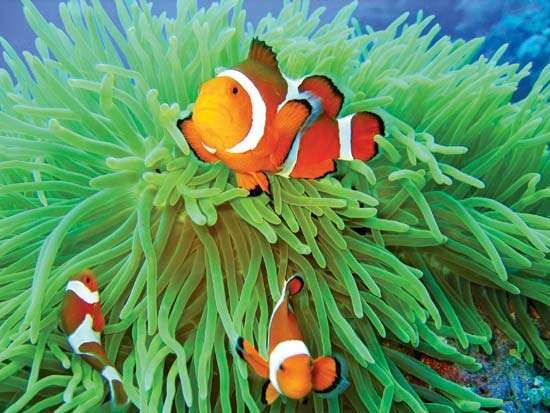
Sea anemone with its mutual symbiont the Clownfish (Image Source: Britannica.com)
Unlike other cnidarians, corals are sessile which means they are attached permanently on the ocean floor taking roots over time like plants do. While we imagine ‘Corals’ as massive hard structures, these animals are actually soft, delicate and tiny.
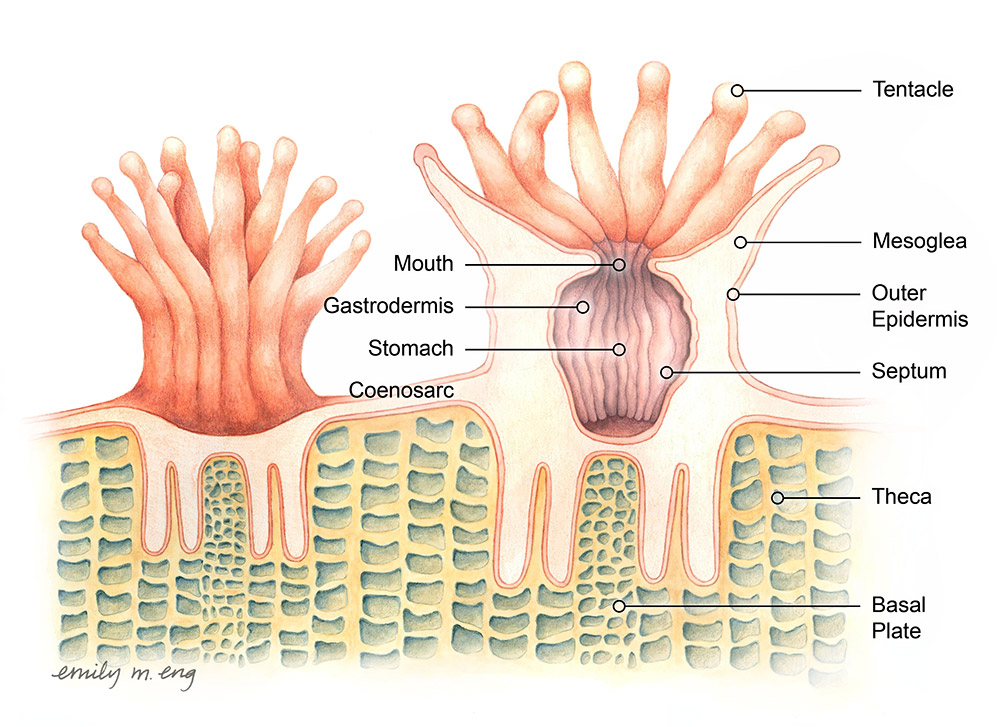
This is a cross section of single Coral or a Coral Polyp showing its sac-like body with the mouth on top surrounded with stinging tentacles (Image Source:Coral.org)
They use the calcium and carbonate ions from the seawater to excrete skeleton for their protection and growth. This process over time gives rise to what we call “Coral Reefs.”
Corals perform sexual reproduction as well as asexual reproduction through fragmentation and budding in which the polyp produces genetically identical new polyp to make a colony.
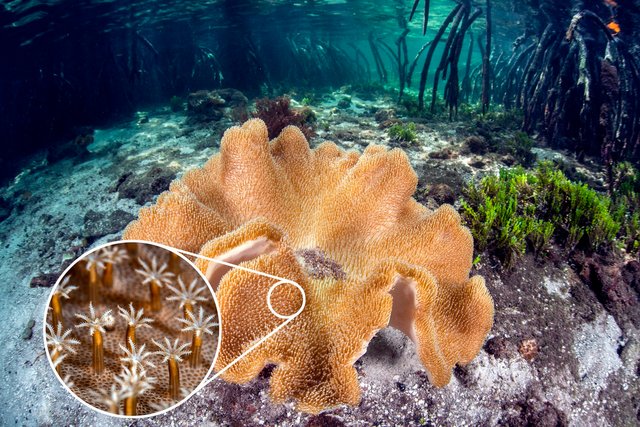
This shows a single colony of corals. If magnified, you can see the identical coral polyps sitting right to each other. (Image Source: dkfindout.com)
So the question is, How Do These Animals Give Off Oxygen?
Well, each tiny coral polyp hides another creatures inside them! They are called Zooxanthellae! And where do they hide them? In their tissues!
Zooxanthellae are photosynthetic algae that performs a mutual relationship with the corals. These plant cells live in most types of corals. They provide food for the corals from their photosynthetic activities and in return, the coral polyps give them protection and nutrients as well for them to carry out photosynthesis.
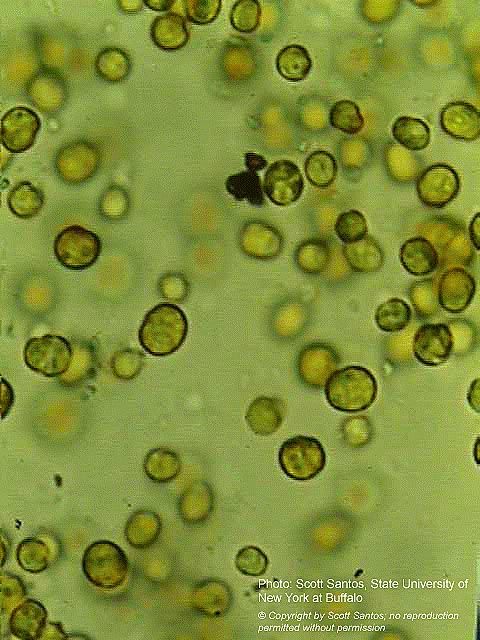
Zooxanthellae within the coral polyp. (Image Source: NOAA)
Zooxanthellae also are responsible for the colors of the corals. When the environmental conditions (e.g. temperature, light and nutrient) become unsuitable, the corals expels their tiny symbionts leaving themselves lacking of nutrients, vulnerable to diseases and white.
Do all corals have Zooxanthellae?
No. There are also corals that do not form reefs and are solitary. Watch out for my next post about them and why we should be careful if we see one.
Are all bleached corals already dead?
NOT REALLY. If the stress happens for a short time, the corals can recover but if prolonged, the corals may not recover and die eventually.
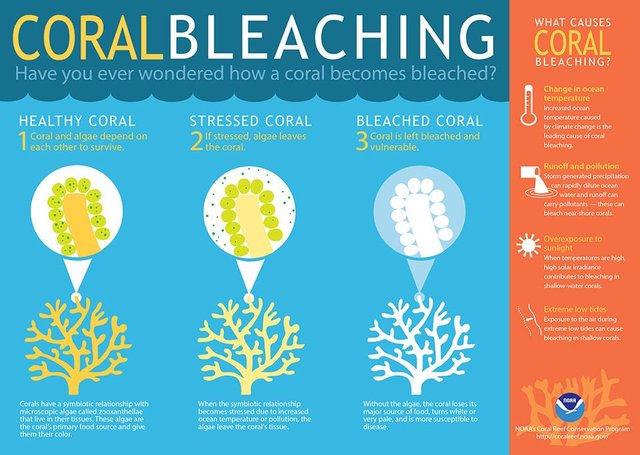
(Infographic Source: NOAA)
Sources:
- http://www.ucmp.berkeley.edu/cnidaria/cnidaria.html
- https://oceanservice.noaa.gov/education/kits/corals/coral12_references.html
- https://www.icriforum.org/about-coral-reefs/what-are-corals
- https://oceanservice.noaa.gov/facts/coral_bleach.html
Still thinking for witnesses to support? I highly suggest,
@steemgigs @curie @blocktrades and @precise
Just click here to vote :))
This has been featured in our Daily Featured Posts and you got a 100% upvote from both @steemph.iligan and @steemph.curator. Congratulations! Continue putting out good/high quality contents in the platform. :)
Yey! Thank you po! Thank you so much.
This post has received a 0.35 % upvote from @drotto thanks to: @banjo.